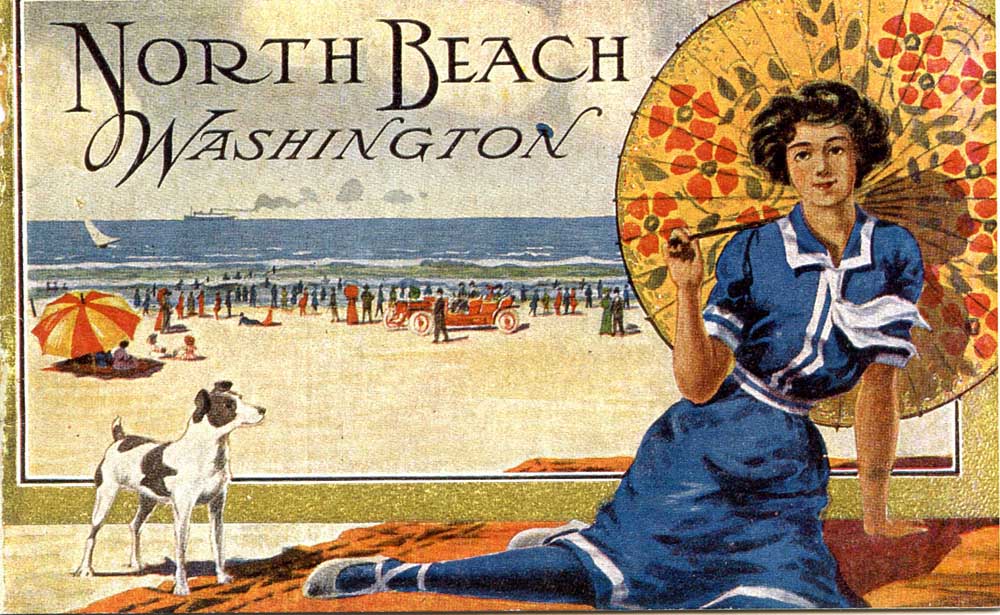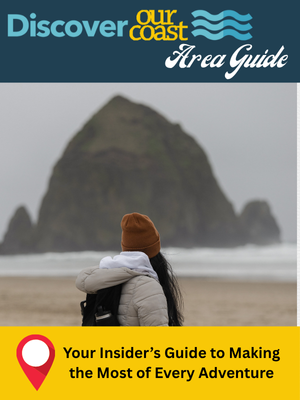Elementary, my dear: It’s summer! It’s the beach! And here they come!!
Published 12:01 pm Monday, July 1, 2024

- The 3½ x 5½- inch, eight-page booklet, “North Beach, Washington” was published by the North Beach Push Club under the auspices of the Oregon Railroad & Navigation Company (the OR&N). That puts its publication date at sometime between 1900 and 1910 — the years that the OR&N owned the peninsula’s narrow-gauge railroad.
It’s a tradition that has been with us for many generations — summer vacation at the beach! Sandcastles and Frisbees, hunting for seashells or unusual bits of driftwood, roasting hot dogs and marshmallows, getting sticky with s’mores. These are memories many of us share no matter the decade, the beach, or the particular circumstances.
But it wasn’t always so. Especially in isolated areas like ours on the coast of Southwest Washington. In the earliest days of settlement, the concept of “a vacation” was probably not part of the pioneer agenda. It was hard to get here, and once here, even harder to set up housekeeping — and to make a living. Only the enterprising and the hearty could meet the challenges of “life at the beach” and most early settlers chose areas a bit inland, protected from the raging storms of winter. Only a few intrepid farmers took up donation land claims on the prairie lands just east of the sand dunes along the coast.
Year-round residents are stocking up pantries and refrigerators to welcome their friends and relatives for vacations at the beach. Campgrounds and summer cottages are full and the bustle at restaurants and souvenir shops is non-stop, morning till night. Summer at the beach! There’s nothing quite like it!
It wasn’t until sheep farmer Lewis Alfred Loomis had a costly accident that soaked his season’s load of sheep wool — in transferring it from his small boat to a steamer it was dumped right into the Columbia — that the first steps were taken toward the eventual “summers at the beach” — those vacations that even we who now live here year-round grow nostalgic about.
The problem was, of course, that any freighter or passenger ship had to anchor in the river channel. Getting from there to shore was fraught with difficulties, as Loomis and his pocketbook discovered. So he went to work solving the problem — first by building a long and substantial wharf along which passengers and freight could be transported directly to and from waiting ships. Once the freight transport problems had been solved, Loomis turned his attention to a stagecoach line to run the length of the beach from Ilwaco to Oysterville and, finally, to a narrow-gauge railroad which would eventually run all the way from Megler to Nahcotta!
Tourism begins
By then, the possibility of summer visitors from the hot, inland valleys of Oregon had become a reality — a fact not lost on enterprising contractor and builder Jonathan Stout, who began his Sea View Resort in 1880. That same year, Henry Harrison Tinker set up his Tinkerville Resort — which would become Long Beach. Three years later, Isaac Clark platted the town of Ocean Park for the Methodist Camp Association. All of these enterprising men were aiming at bringing summer visitors to the beach but each appealed to a different population group — Seaview to the affluent, Tinkerville to the camping set, and Ocean Park to the conservative, religiously oriented. Tourism at the North Beach Peninsula had begun!
Loomis’ river boats and railroad advertised widely and successfully in Oregon. By the turn of the century, summertime tourism became a big business. The local railroad offered specialty tours to the Klipsan Beach Life Saving Station to watch the buff young crew do their drills, including firing the breeches buoy so that they would be well-practiced in the event of a shipwreck coming onto the beach. (And there were many.) When the occasional whale washed ashore, there were excursion trains (not for the faint-of-nose) to view the pungent remains.
On summer weekends, a late ship from Portland — perhaps the side-wheeler steamer T.J. Potter — would make a Friday evening run from Portland to Ilwaco, bringing husbands and fathers to join their families at the beach. Known as the “Daddy Boat,” it would meet the “Papa Train” for the run up the Peninsula, greeted at every stop along the way by waiting families and welcoming friends.
Hotels sprang up the length of the Peninsula, each outdoing the other in décor, restaurant facilities or other amenities. In early 1910, the proprietors of the Peninsula organized the North Beach Push Club for the purpose of further increasing the area’s popularity. The little narrow-gauge railroad, now under the management of the Oregon-Washington Railroad & Navigation Company, became an active member. The Washington State Legislature also got into the act when owner of the Driftwood Hotel in Long Beach wrote to her local representative to consider extending the commercial clam-digging season so that she could meet the demands for this local seafood delicacy.
Tourism: Year-round season!
By the teens and 20s, cars were beginning to show up on the peninsula. The first to arrive, according to the late Jack Williams, belonged to saloon-keeper Herbert Petit of Ilwaco, quickly followed by one “with great big wheels on it,” owned by Dr. Paul. At the north end, in Oysterville, Bert Andrews’ “automobile truck” arrived in 1910, barged over from South Bend where it had arrived on the Northern Pacific Railroad and was barged across the bay. “Auto courts” sprang up and, by 1914, Jack Inman had the Ford agency in Ilwaco and the new era of transportation (and tourism!) was underway.
But there was still the matter of roads. The rutted, sandy cart and wagon tracks on the Peninsula were not ideal and, gradually, the main thoroughfares like Sandridge Road were graveled with rock barged over from Long Island. The first road from “the outside” to connect with the Peninsula was the K-M Highway, constructed “through three counties to the sea” in 1925. According to the Willapa Harbor Herald: “the trip was made in celebration of the road’s final completion and opening, and marked an era in road building in Washington that is destined to play an important part in the future development of Wahkiakum, Cowlitz, and Pacific Counties and the entire district.”
One last note in the article said: “Some of the party left on Saturday night, but most of them stayed over and clams in the morning [made for] a delightful breakfast at the Driftwood Hotel with Mrs. Molly Lyniff.” (Whether Mrs. Lyniff was successful in her plea to the legislature is not clear.)
And now, nearly 100 years later, although we consider “tourism” a year-round phenomenon, those of us who live here full-time know that as surely as the Fourth of July comes round on the calendar, the visitors are on their way. Motels, hotels and Airbnb’s have been booked for weeks — sometimes for a year in advance — and year-round residents are stocking up pantries and refrigerators to welcome their friends and relatives for vacations at the beach. Campgrounds and summer cottages are full and the bustle at restaurants and souvenir shops is non-stop, morning till night. Summer at the beach! There’s nothing quite like it!









